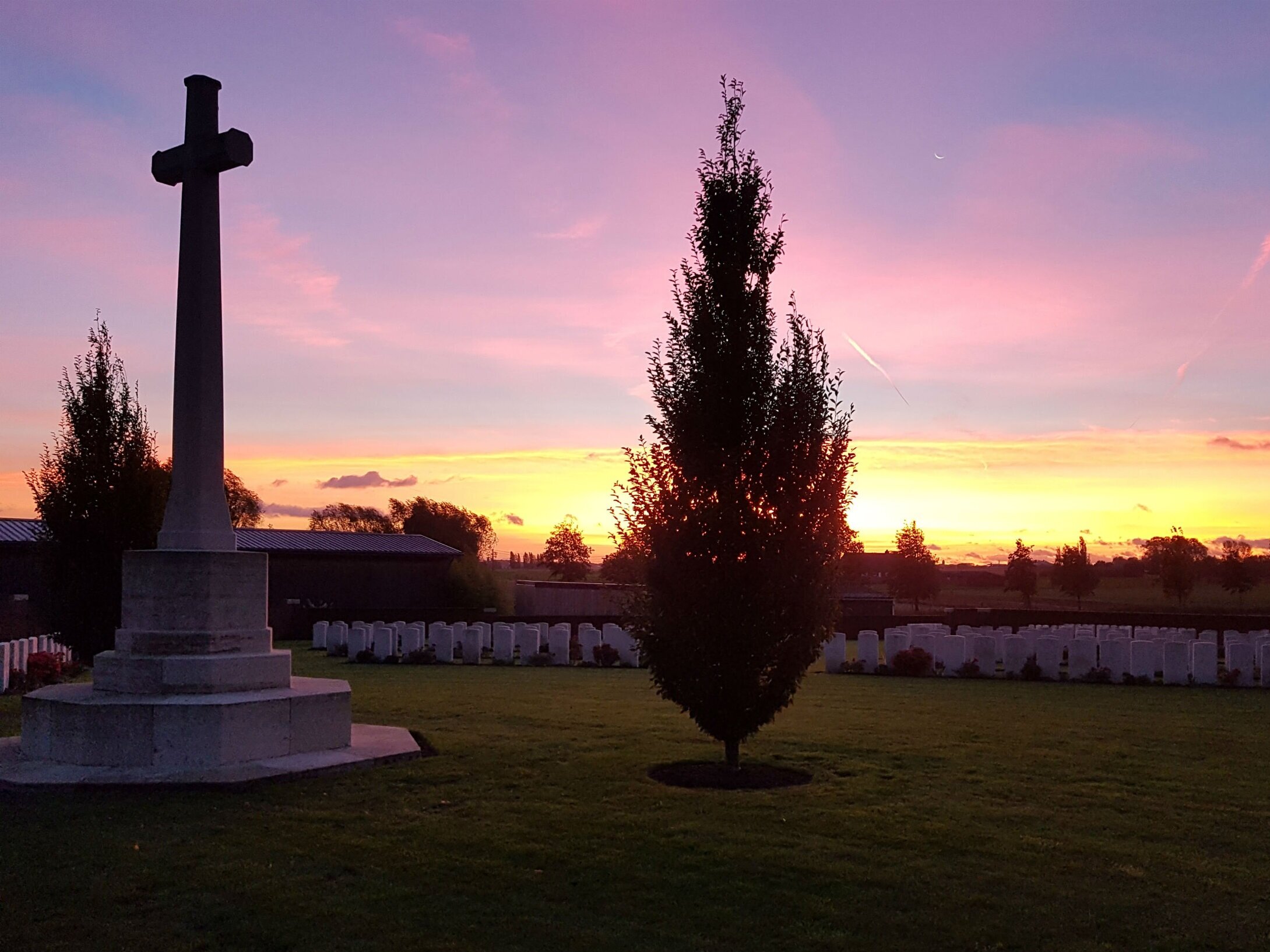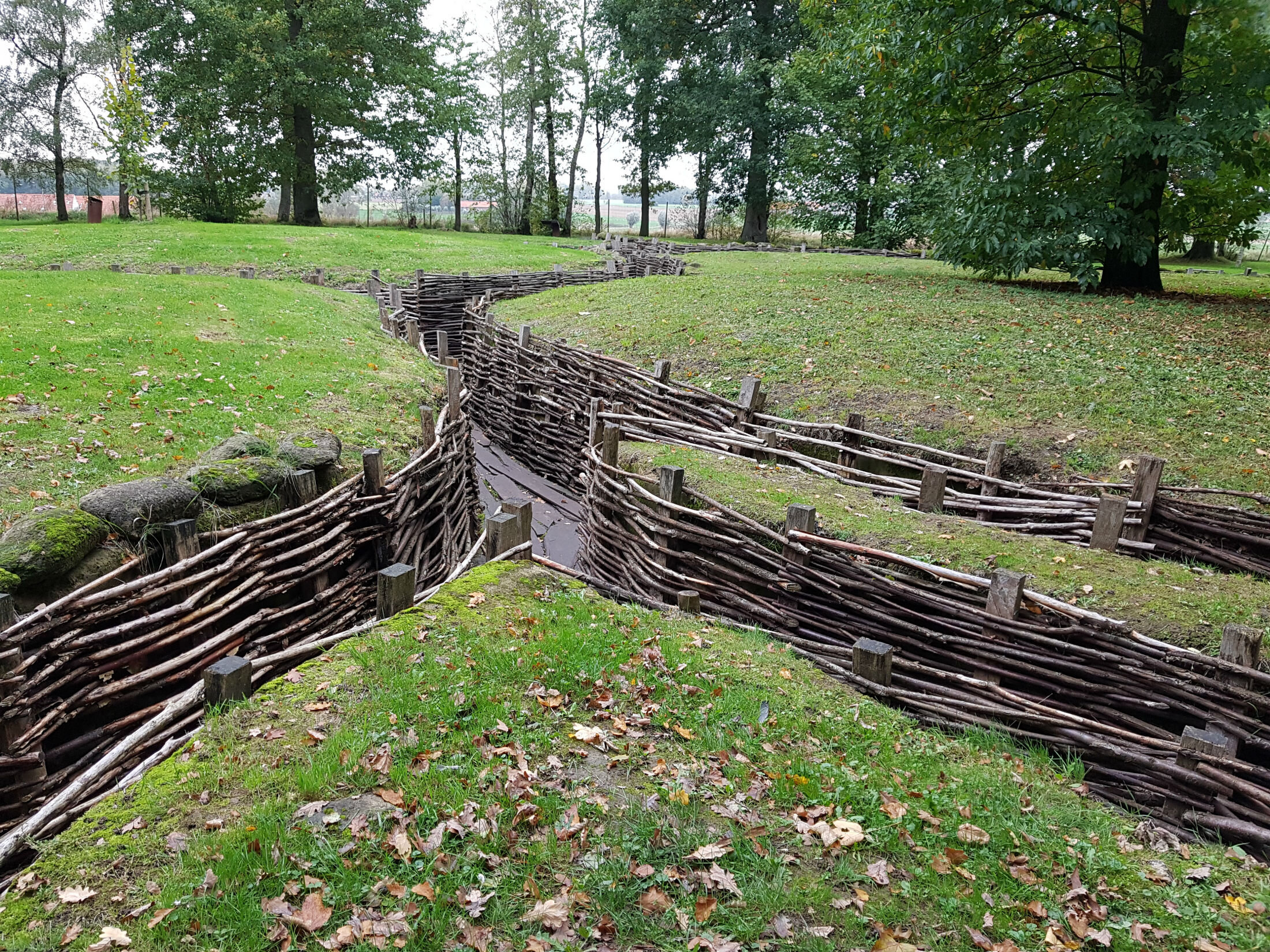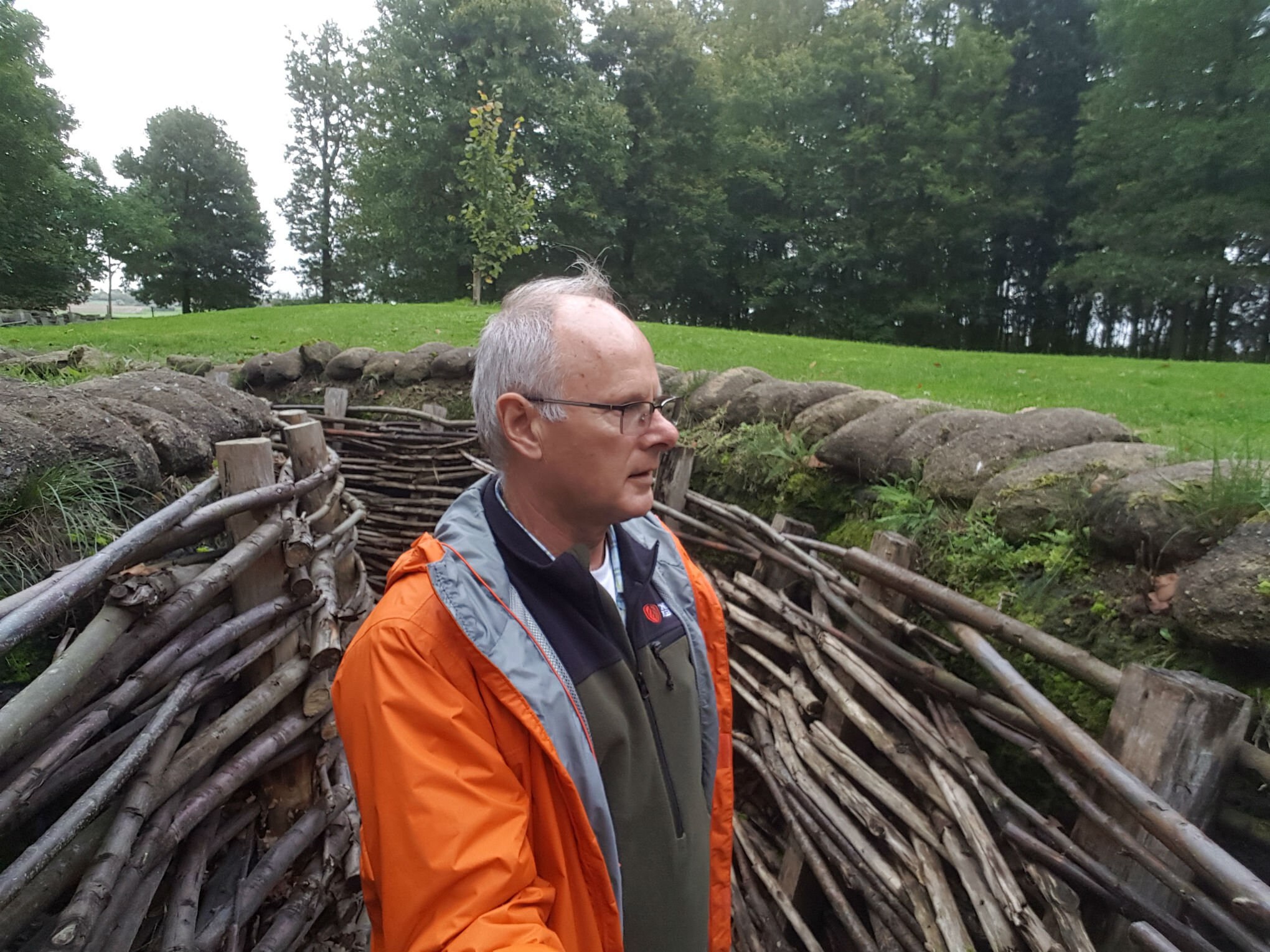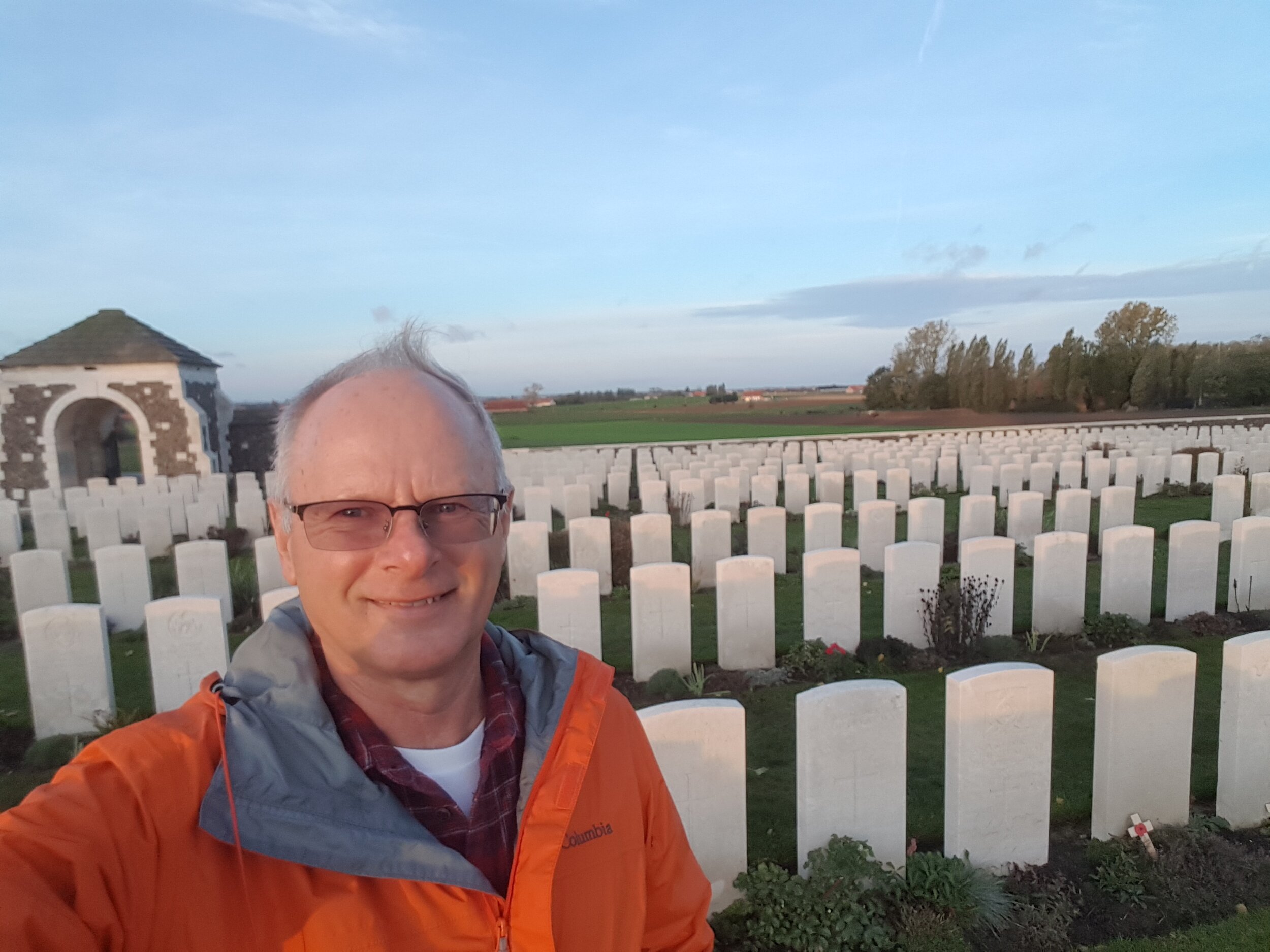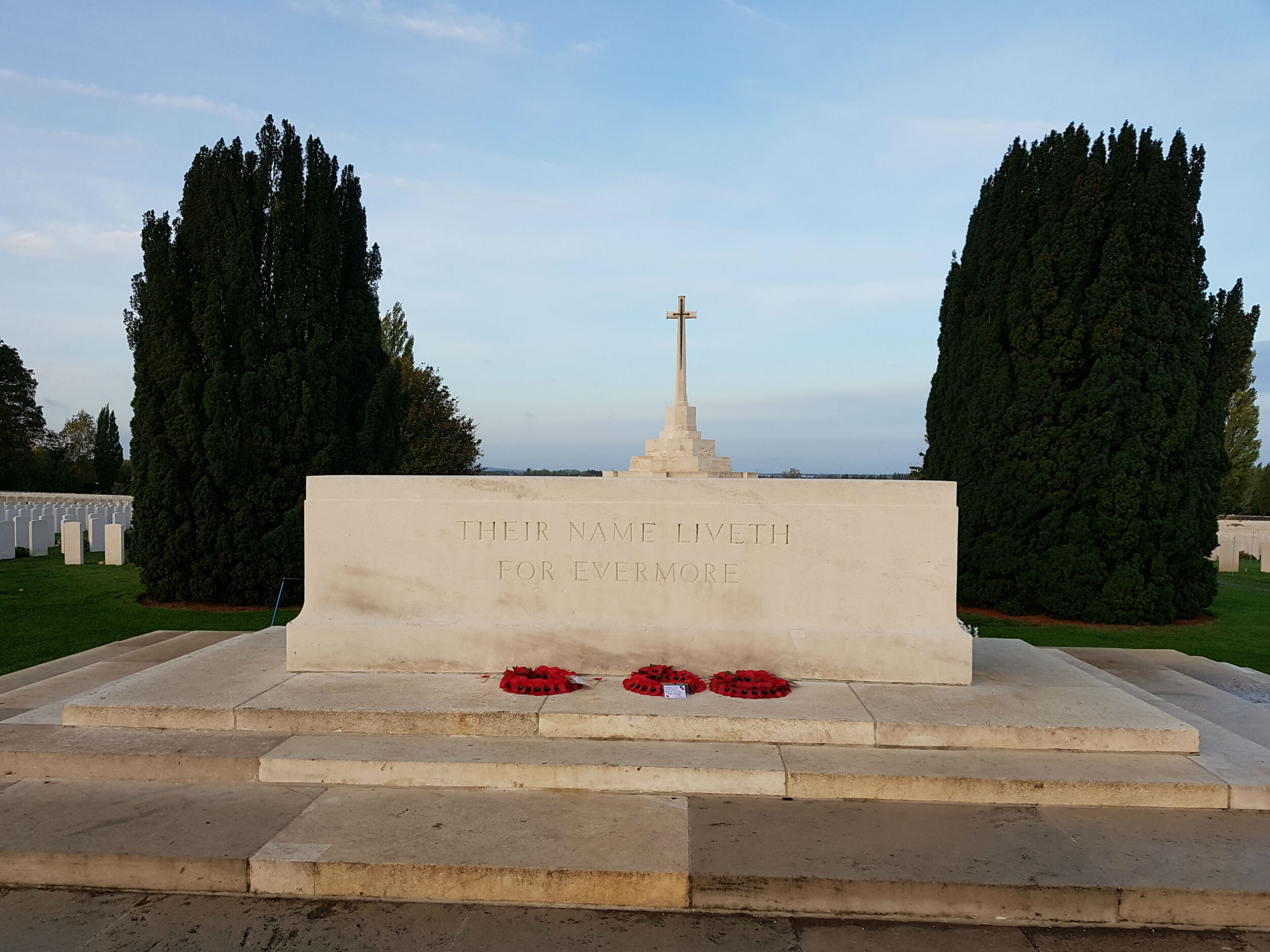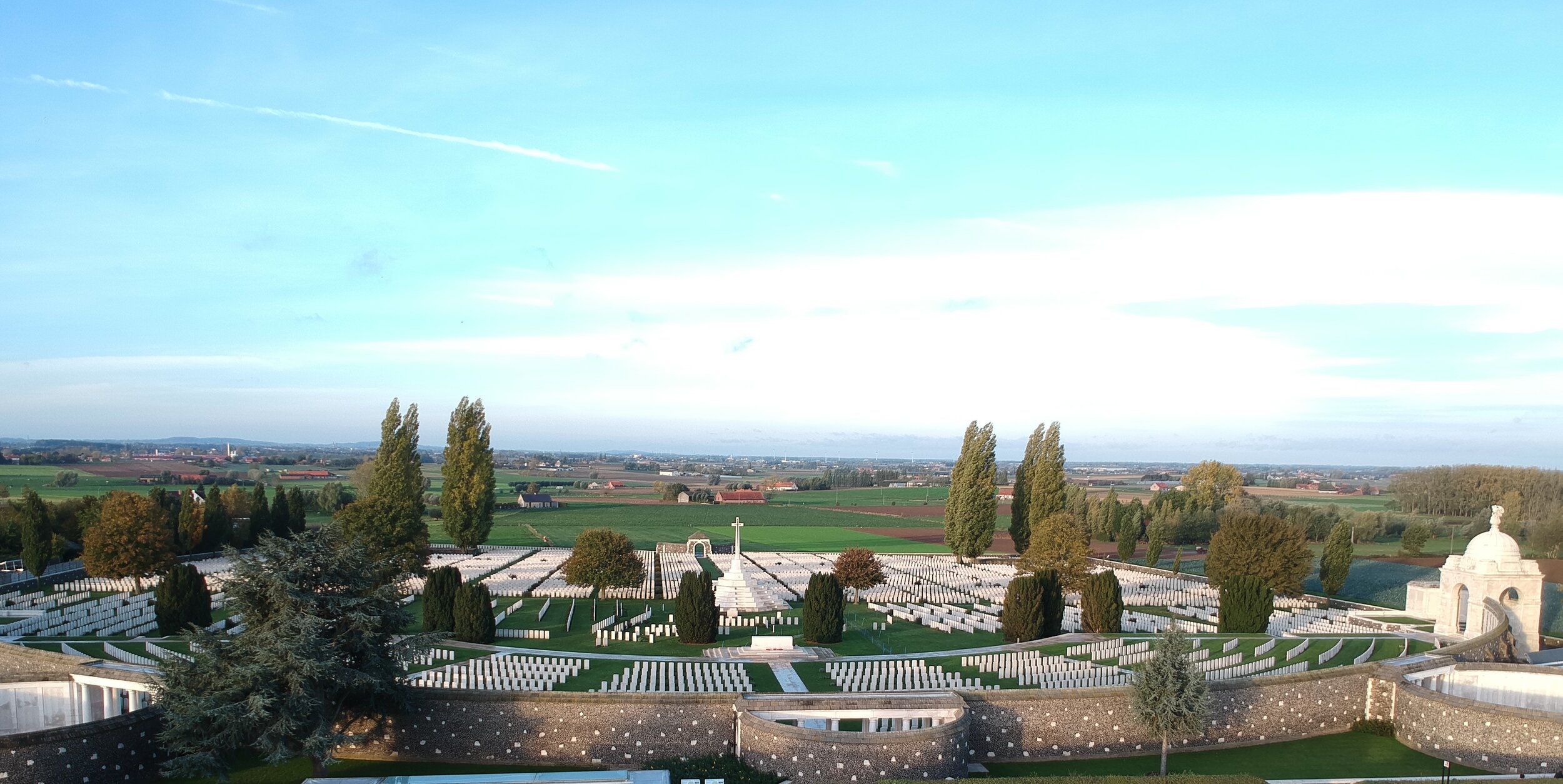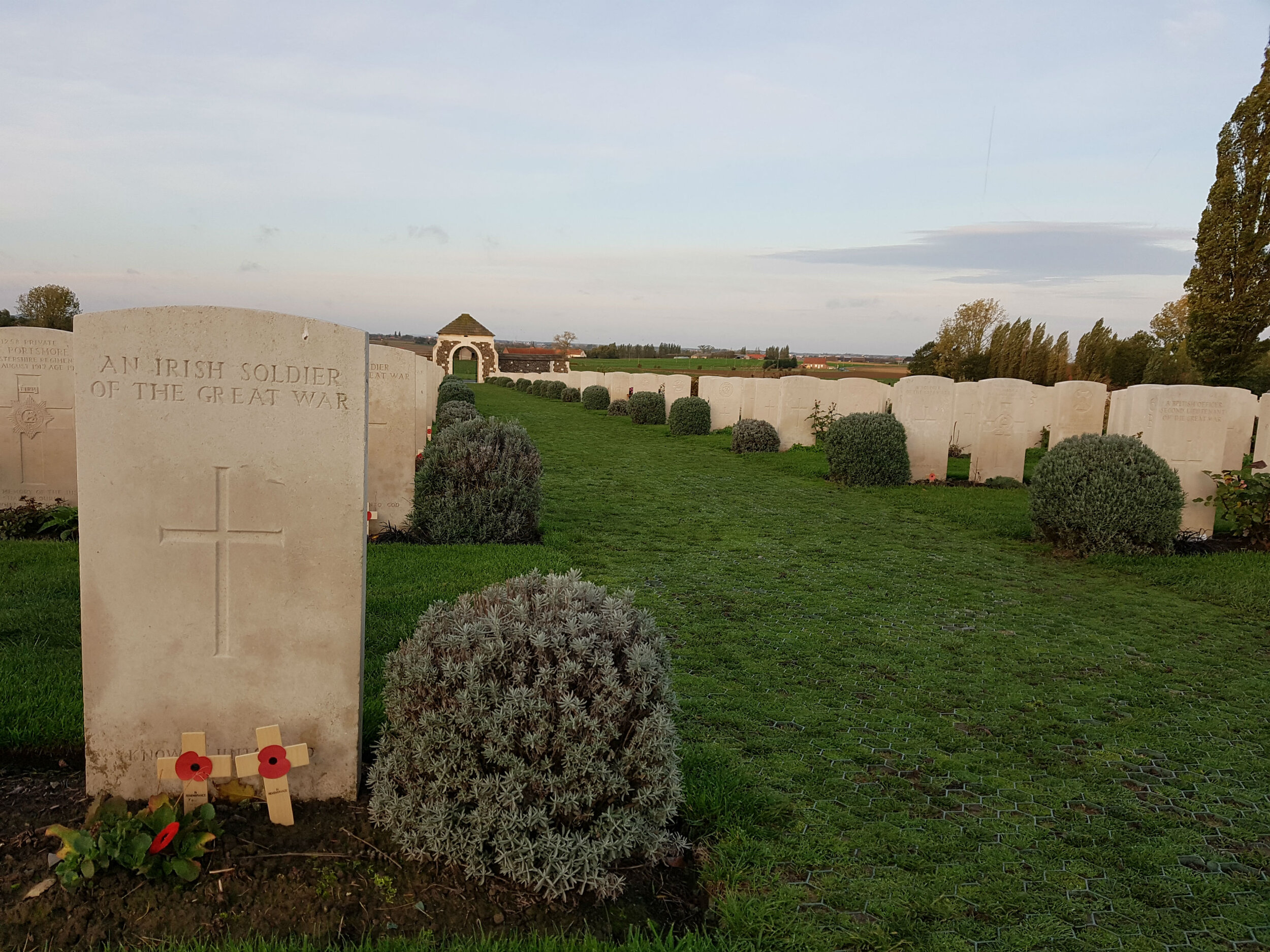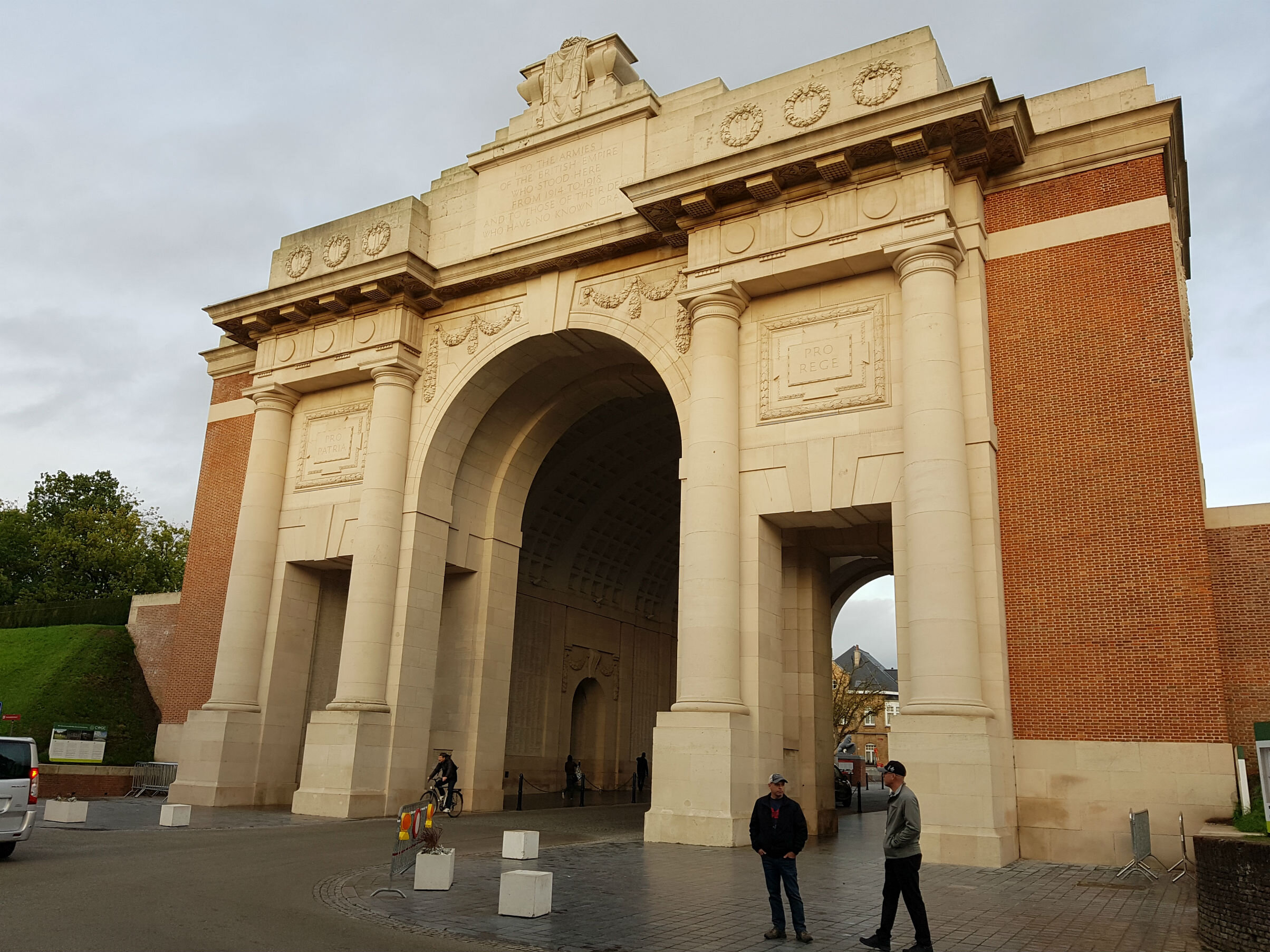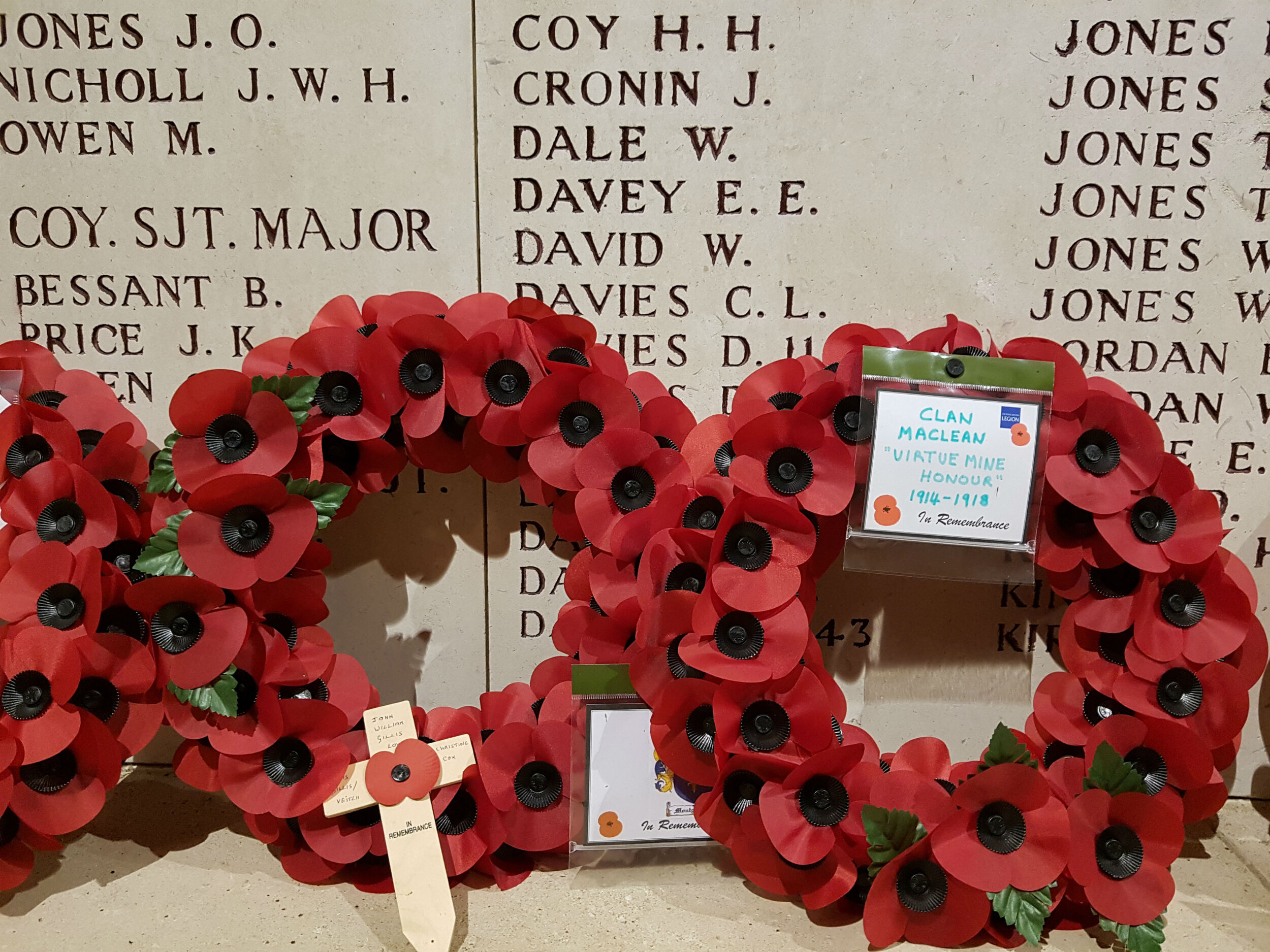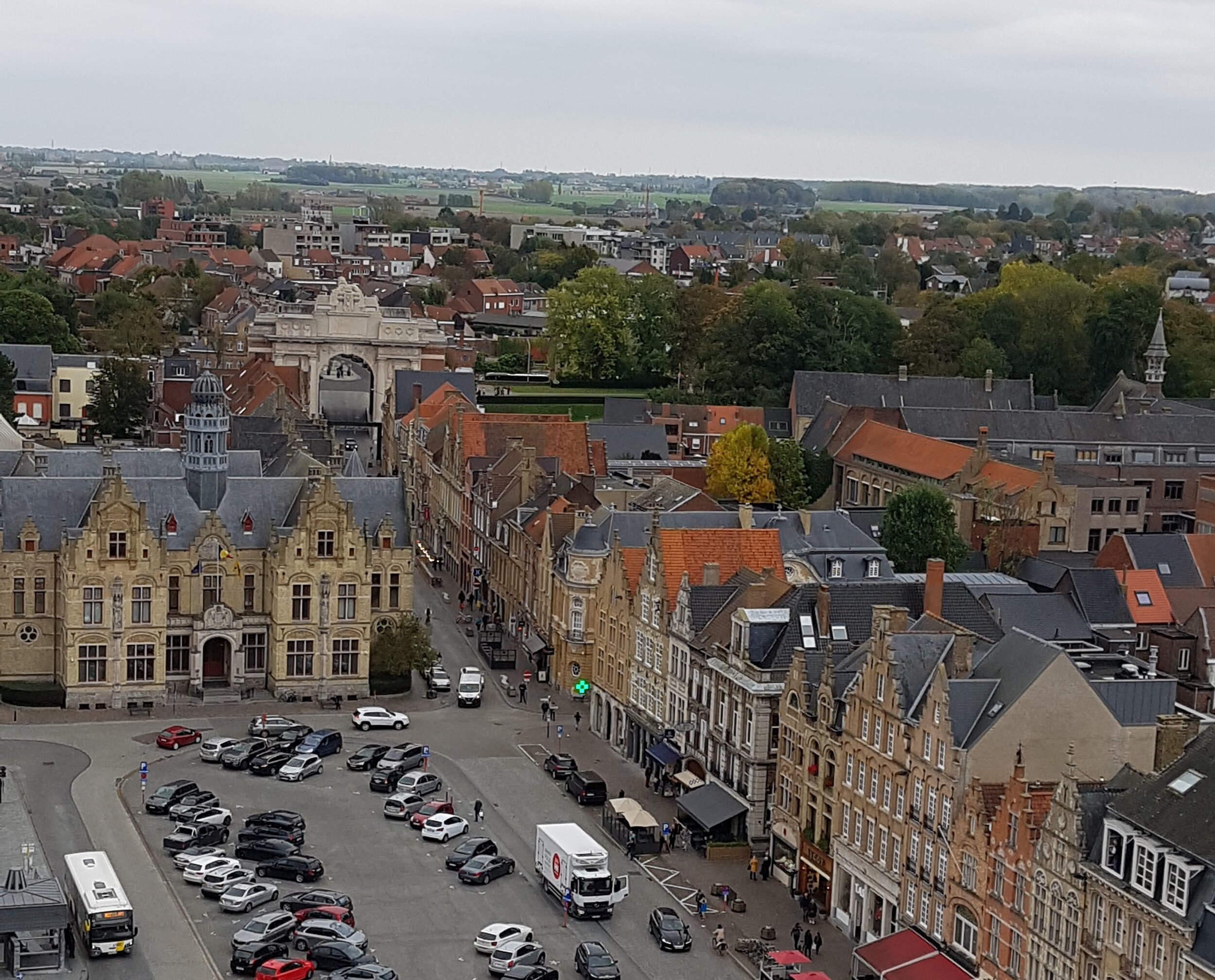Francien and I visited the European parliaments in Strasbourg and Brussels and the Flanders Fields in Belgium. We had hoped to better understand the workings of the European Institutions and get a better appreciation of the notorious WW-1 battle fields along the border of Belgium with France. What a contrast we experienced!
Strasbourg shares the title of European capital with Brussels. Indeed, several European institutions have their seat in the European district the European Parliament, the Council of Europe and the European Human Rights Court (ECHR). The parliament is the only building open to the general public. After some brief security checks, we sat on the visitor gallery and took in the modern and open feeling of the world’s largest transnational parliament. This plenary hall is located in the hemicycle. The 751 members of the European Parliament represent 510 million inhabitants and form groups based on their political affinity, not on their nationality. The Chairs of the political groups sit in the first row in the semi-circle opposite the President of the European Parliament. 24 Interpreters sit in glass booths encircling the plenary hall, one for each official language. The parliamentarians represent 28 countries. (sorry my British friends, unfortunately soon there will be 27 countries in the EU, but we still wish you the best of luck)
That day no proceedings were taking place. We took an audio tour through the building and listened to a few parliamentarians who were hosting a visit of some of their constituencies. We learned that the EU has 33000 full-time employees (the UK tax offices alone employ 65000 people, so bureaucracy is relative!) Three different alphabets are being used. We could hear the people speaking various languages, bringing with them different cultures and believes. I real multi-cultural atmosphere. When we left the building, we passed a group of Kurdish people demonstrating against the Turkish invasion of Syria.
Two weeks later I drove to the European capital Brussels, Belgium, hoping to better understand how the European institutions there complement the ones I had seen in Strasbourg.
“My takeaway from our visits to Strasbourg and Brussels: the latter has a much more European feeling”
Walking through the European Quarter in Brussels I saw people in business suites rushing to work. Diplomatic cars, people wearing International Press badges, European flags and European related buildings everywhere. I watched Iranian protesters on the square in front of Council of the EU and EU commission buildings.
First I visited the Parliamentarium, the visitor’s centre of the European Parliament in Brussels. The history of the EU was documented on interactive displays, objects, photos and information panels. More displays showed the uniqueness of all member states and the workings and the role of the parliament. Visitors interactively engaged in discussions about current issues like climate change, free trade, global peace efforts, cyber security and diversity. Many of the visitors were young and keen to leave their feedback’s and thoughts on these important issues.
In and around the parliament it was humming with people arriving for work, heading to their offices and students entering the plenary hall for a special European leadership development program. The hemicycle is the same as in Strasbourg apart from the colors of the furniture’s. Blue in Strasbourg, brown-beige in Brussels. Contrary to the bureaucratic picture the media paint about this, the buildings had a very welcoming and dynamic feel to it. It dawned to me that the European Union does not do a good job explaining its citizens all the great things which have been achieved and are being worked on. Unfortunately, mainly negative media reports reach the people regarding the EU.
After completing my visit I drove two hours towards the French border, arriving in Ypres, a notorious city on the Flanders Fields. During The Great War between 1914 and 1918 here were key positions on the Western Front and this area witnessed five major battles. First, I stopped at the WW-1 Museum in the restored 14th century Cloth-House on the town square: on three floors there were multimedia displays, very personal stories of people who fought here, maps showing the battle fields and front lines. There were many tourists from the UK. I climbed the bell tower and gazed across gentle hills around Ypres. A few minutes later I drove in my car through rural villages, clean, rustic with cobble stone streets and face brick houses, old pubs and restaurants. Every few kilometers I saw monuments and bunkers marking battle fields. Cemeteries with thousands of fallen soldiers could be seen scattered around in the hilly fields. Fog hung low of the fields on which thousands of soldiers died, giving it all an eerie feeling.
I walked in some of the restored trenches of the German Bayern lines and tried to envision life in there during those horrendous battles, but I could not…
The terrain now looks so benign but it is hard not to feel sadness standing by the graves of young men who died hear. Thousands of graves marked by headstones with names, no names, dates, inscriptions. Vast numbers of graves, holding remains that were un-nameable. Memorials with name after name after name of missing soldiers. I read the carvings on the stones and some text clips and bits and pieces that people had stuck to them. I saw small pebbles on one Jewish gravestone. A few graves marked reburied bodies. The immaculate somber beauty of these cemeteries was impressive. A visit to any of the war cemeteries and battlefields scattered across Flanders is really a moving experience.
Apart for a four-year gap during the Nazi occupation in WW-2, a bugler from the Ypres fire brigade has stood beneath the Menin Gate at 20:00 every evening since 1928 to play "The Last Post", Britain's mournful call to its fallen soldiers. Located in the center of Ypres, this ceremony honors the 55.000 missing men from Britain, Canada, Australia, India, South Africa and the West Indies whose names are carved on the white stone gate. Some names were marked with poppies. A quire sang two songs which gave me goose bumps! People visiting were humbled by seeing all this, and I was one of them.
Ten million soldiers killed in just four years; One reason for this high number of casualties was the change in military technology. The first time ever machine guns were used, making the number of soldiers less important than the number of bullets. Allied forces eventually won due to tunnels they dug crossing the front lines in which they put 500.000 kg dynamite: the resulting detonation was devastating to the German forces and marked the beginning of the end of WW-1.
The next morning the sun rose over Tyne Cote, the largest Commonwealth War cemetery in the world. I read some of the more than 12000 gravestones and I recalled my own visit to the border between South and North Korea only two years ago when I learned that they are still digging tunnels there for the same purpose. Didn’t we learn anything? I also thought about our visits to the battle fields in Gettysburg, USA were so many young men died in much the same way. I remembered visiting Pearl Harbor, the Korean UN cemetery in Busan, the ANZAC museum in Albany, Australia, the Boer war battle fields in South Africa, the Dutch war cemetery in Banda Aceh, Indonesia, the concentration camp in Auschwitz, the holocaust memorial Yak Vashem in Jerusalem. The Flanders Fields felt like a déjà vu.
Alas, depressing it was, but the slaughter between countries in Europe on the battle fields is a dramatic contrast to the workings of the European parliament, spanning not even three generations. How good it was to see how politicians argue in a transnational parliament instead of people fighting in bloody battles like the Europeans have done too many times in the past. The demonstrations we saw are prove of our freedom, one of the many common values we share in Europe. Those battle fields stand as a stark reminder how much progress we have made in the past 70 years and should be positive about. Reason I felt proud about the European Union, which played such a crucial role in that.
Yes, it feels good to be European.





